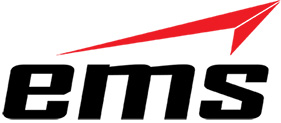3D scanning is becoming more and more popular these days, especially when it comes to rendering models for various scientific projects. 3D scanners take a real object or the environment and collects data on that object in order to create digital 3D models. The data collected from the objects or environment could include the shape and color of those items.
3D Systems Geomagic Solutions
3D Systems Geomagic Solutions has helped the North American Eagle to a new world record. The North American Eagle is a 56 foot-long car that is jet powered. It was built from the fuselage of a Lockheed F-104 fighter jet. It was designed to one day drive as fast as 771 MPH.
When the team working on the vehicle, from Washington State, began to remodel the fuselage, it realized that a complete 3D model of the vehicle would be necessary for the project. This would be the first step in making sure the aerodynamics and shock resistance of the vehicle were perfect.
The vehicle was scanned with a Photon Laser scanner from FARO and Capture 3D technologies. The laser scanned the vehicle, recording 30 million points and putting them into a point cloud. The points were then read and transferred by Geomagic Studio into usable data for the team. The data was then used to determine airflows on the vehicle as well as how shock waves would affect it.
Benefits of 3D Scanning
3D scanning can be very beneficial for those who use it often and correctly. Some of those benefits include aiding in the design of a product using a part from someone else, provide an updated version of an out-of-date CAD model, effectively record complex parts and shapes and record missing or replacement parts.
3D Scanning Pipeline
The process of gathering and placing all of the data from a scanned object into one area is known as the 3D scanning pipeline. For the most part, just a single scan will not do the trick for recording the data of an object. You will need multiple scans to accomplish this, including various angles of the object. For the most part, it will take hundreds of scans to achieve the 3D version of an object you desire.
Once all of the data is streamlined into a reference system, the data can then be combined, or merged, to form the 3D version of the object. The 3D scanning services available today are divided into two categories; non-contact and contact 3D scanners.
Picture credit: 3D Systems


